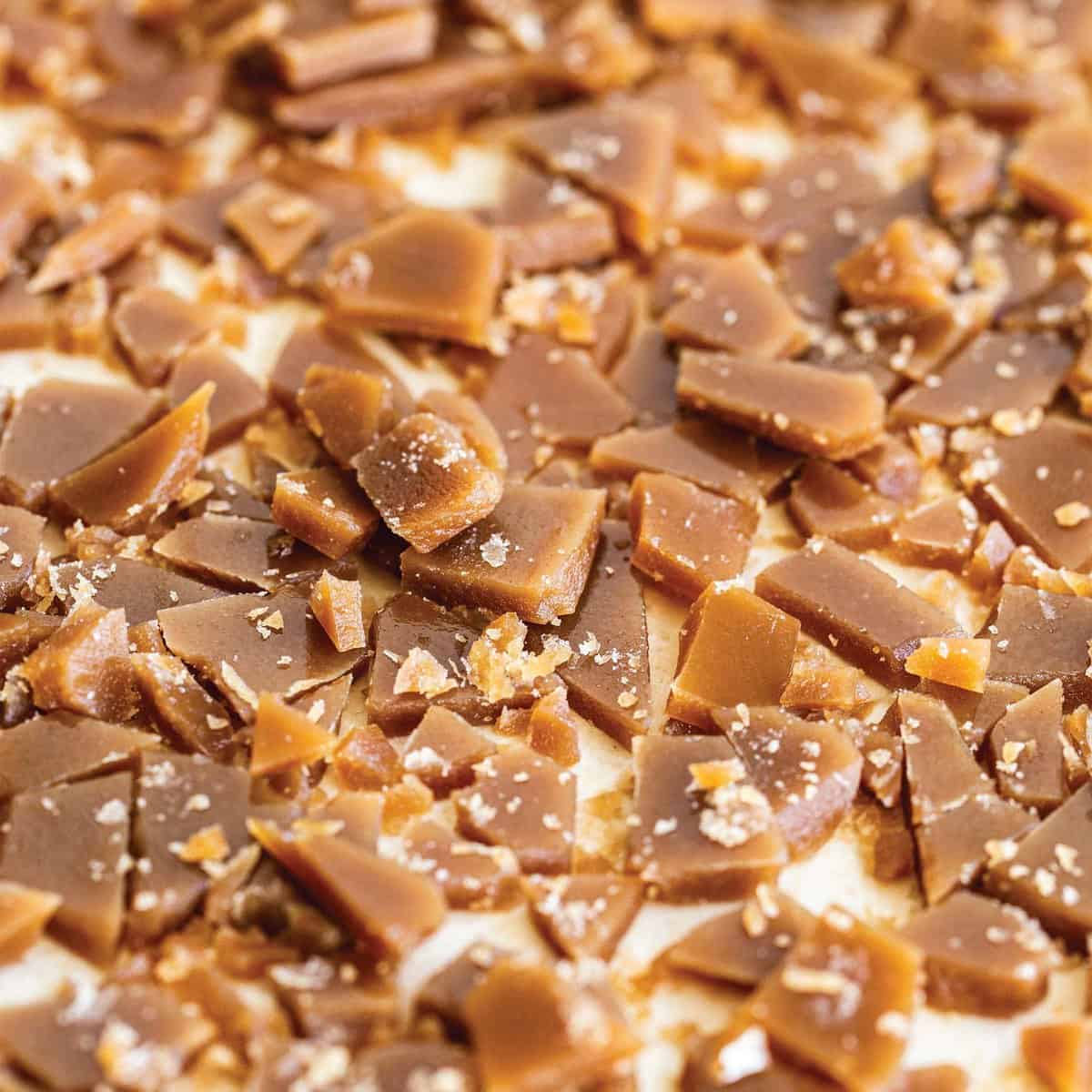Master the Art of Toffee Making: A Step-by-Step Guide for Fun Family Time
Hey there, sweet-toothed parents! Are you looking for a fun and delicious activity to do with your little ones that can create lasting memories? Making toffee at home is a sticky, sweet adventure that’s just perfect for family bonding. It’s simpler than you think, and with this comprehensive guide, you’ll become a toffee-making maestro in no time! So, roll up your sleeves, get your aprons ready, and let’s get started on this toothsome journey.
Understanding Toffee: A Little Sweet History
Before we dive into the nitty-gritty of toffee creation, let’s take a quick peek at its origins. Toffee is a confection that dates back hundreds of years and is loved around the world. It’s known for its delightful crunch and caramel flavor. Toffee is essentially caramel’s crunchy cousin, and it has become a staple in the world of sweets, perfect for every occasion.
Gathering Your Toffee Trove
Making toffee requires a few basic ingredients and some kitchen tools. Here’s what you’ll need:
- Ingredients:
- 1 cup of granulated sugar
- 1 cup of unsalted butter (2 sticks)
- 1/4 cup of water
- 1/2 teaspoon of salt
- 1 teaspoon of pure vanilla extract
- Optional toppings: chocolate chips, nuts, dried fruit, or sea salt
- Tools:
- A heavy-bottomed saucepan
- A wooden spoon or silicone spatula
- A candy thermometer
- A baking sheet lined with parchment paper or a silicone baking mat
The Toffee Tutorial: Let’s Cook!
Making toffee is like a delicious science experiment. Precision is key, so follow these steps closely and keep an eye on the temperature:
- Before you start, prep your baking sheet by lining it with parchment paper or a silicone mat. This ensures your toffee won’t stick and will be easy to remove once cool.
- In your heavy-bottomed saucepan, combine the sugar, butter, water, and salt. Place the pan over medium heat and stir until the butter melts and the sugar dissolves.
- Clip the candy thermometer to the side of the pan, ensuring it doesn’t touch the bottom. Continue to cook the mixture, stirring occasionally but not too often, as you let the magic happen.
- Watch as the mixture transforms! It will begin to boil and gradually deepen in color. You’re aiming for the “hard crack” stage, which is between 300-310°F (149-154°C) — this is where candy thermometers are a parent’s best friend in toffee-making.
- As soon as your thermometer indicates you’ve reached the hard crack stage, remove the saucepan from the heat. Stir in the vanilla extract, which will give your toffee that extra aromatic kick!
- Carefully pour the hot toffee onto your prepared baking sheet, using the spatula to help it spread out evenly. If you’re adding any delicious toppings like chocolate chips or nuts, now’s the time to sprinkle them on.
- Allow the toffee to cool completely — patience is key here! Once it’s set, you can break it into pieces by hand or use a knife to cut it into squares or shards.
While waiting for your toffee to cool, why not use the time to chat with your kids about their day? Or perhaps plan your next family kitchen adventure! Before you know it, you’ll have a batch of homemade toffee ready to be devoured.
And there you have it, the delightful process of making toffee from scratch! This sweet craft not only yields delectable results but also teaches several valuable skills like patience and attention to detail. Stay tuned for even more tips, including variations on the classic recipe, storage advice, and fun ways to package toffee for gifts. Who knows, this could become a new family tradition!
Join us for the next part of our sweet series where we’ll cover troubleshooting tips for common toffee troubles and creative ideas for integrating toffee into other desserts. Making toffee is an enchanting experience with room for personalization and creativity. So go ahead, indulge in the joy of toffee-making and treat your family to a batch of handcrafted sweetness. Happy toffee creating!

Five Things Parents Should Know Before Making Toffee
1. Safety First!
Toffee-making involves boiling sugar to high temperatures, which can be dangerous. Always keep a watchful eye on children and ensure they’re at a safe distance from the stove. Have oven mitts and pot holders within easy reach, and use the candy thermometer to prevent the sugar from burning or getting too hot.
2. Patience is Key
Candy making isn’t a rush job. From watching the sugar melt to waiting for the toffee to cool, each step requires patience. Use this opportunity to teach your kids the value of taking their time and enjoying the process.
3. Consistent Heat is Crucial
Controlling the heat is crucial when making toffee. A steady medium heat is preferable to ensure even cooking without burning the mixture. Explain to your children how candy making is like a delicious experiment that needs just the right conditions to succeed.
4. Prep Everything in Advance
Mise en place, or “everything in place”, isn’t just a fancy cooking term—it’s a lifesaver when making toffee. Having all your ingredients measured and tools ready can make the process smoother and more enjoyable for everyone involved.
5. Get Creative with Toppings
Let your kids express their creativity by choosing their favorite toppings for the toffee. Whether it’s a sprinkle of sea salt or a generous helping of nuts, personalizing toffee can make the experience even more delightful, and the end result even tastier.
Additional Toffee Tips & Tricks
Learning the basics of toffee making is just the first step. There’s a whole world of variations, tricks, and tips that can help you become a toffee aficionado. Here are a few additional pointers:
- For a richer flavor, consider using brown sugar instead of white granulated sugar.
- Watching for color change can be as effective as a thermometer. Aim for a rich, amber hue.
- If you don’t have a candy thermometer, test the toffee by dropping a bit into cold water. If it hardens immediately and is brittle, it’s ready.
- Stirring too much can cause crystallization, so keep stirring to a minimum once the sugar has dissolved.
- If your toffee separates (the butter starts to split from the sugar), it has likely become too hot. Remove it from the heat and carefully stir until it comes back together.
Storing Your Toffee
One great thing about toffee is that it stores well, so you can enjoy your sweet treat over several days. Here’s how to keep your toffee delicious:
- Store toffee in an airtight container to keep it from becoming sticky or chewy.
- Keep the container in a cool, dry place; humidity is toffee’s nemesis!
- If you’ve used toppings like chocolate or nuts, consider refrigerating the toffee to maintain its texture and the freshness of the toppings.
- Layer parchment paper between toffee pieces to prevent sticking if you’re stacking them in a container.
Making toffee at home with your kids can be an extraordinary way to make new memories and build lasting traditions. It’s an opportunity to teach, learn, bond, and of course, indulge in some homemade sweetness. So, gather your ingredients, share the excitement, and get ready to enjoy one of life’s simple pleasures. As you guide your kids through the joy of cooking, they’ll learn valuable lessons and enjoy the rewards of their efforts—the perfect blend of education and indulgence wrapped up in a delicious toffee package!
For more great articles please see here. For more information see here
Disclaimer
The articles available via our website provide general information only and we strongly urge readers to exercise caution and conduct their own thorough research and fact-checking. The information presented should not be taken as absolute truth, and, to the maximum extent permitted by law, we will not be held liable for any inaccuracies or errors in the content. It is essential for individuals to independently verify and validate the information before making any decisions or taking any actions based on the articles.




